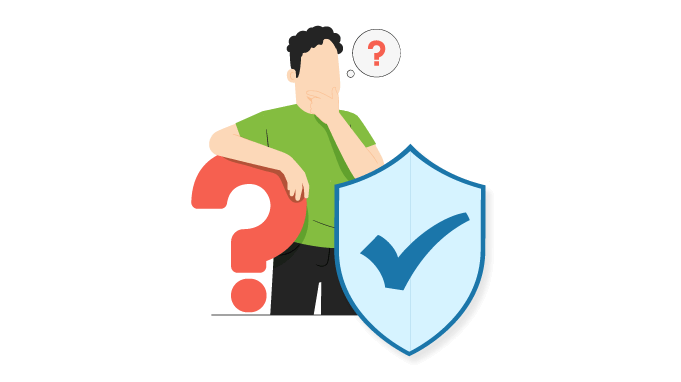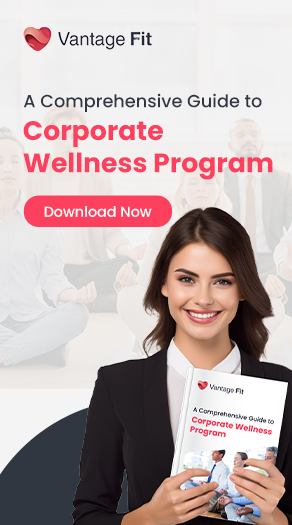55 Essential Safety Messages for Work to Keep in Mind
Did you know incorporating safety messages into your daily routine will positively impact your workplace? That is correct! Implementing these messages into your workplace may make it a safer place for everyone.
One of your main responsibilities should be to create a safety culture in your firm. Employees must understand and follow the processes to stay safe and report concerns.
A safe workplace not only helps keep your employees motivated and morale strong, but it also has several benefits. Although there are many more, but we have aggregated the best messages for you here.
Continue reading to find out why workplace safety is so essential and how you can help improve it!
What are Safety Messages?
Safety messages are like friendly reminders at work, telling you how to stay safe. Think of them as quick tips or alerts that point out dangers you might not notice. Their main objective is to show you the safe way to do things. They cover all sorts of things – from the right way to use machines to handling chemicals safely or what to do in an emergency.

These messages are like the helpful signs you see every day. They always pop up to keep you on your toes about staying safe. They're not just rules; they're like a safety net, keeping the workplace safe for everyone.
Suggested Read: Workplace Health and Safety: Ways to Incorporate It
The Importance of Safety Messages in Your Workplace

-
Accident Prevention: Safety messages warn employees of risks, reducing accidents and injuries.
-
Legal Compliance: They ensure adherence to safety laws and regulations specific to the industry.
-
Safety Culture: Regular messages foster a workplace culture prioritizing wellness and safety.
-
Cost Savings: Preventing accidents cuts down on expenses related to injuries and damage.
-
Employee Well-being: Safety messages show a commitment to the health and safety of employees wellbeing, boosting morale and retention.
Top 55 Examples of Workplace Safety Messages of the Day

As an employer, sharing safety messages with employees is important to promote a safe and healthy work environment.
A good safety message, such as a slogan, should be remembered. Businesses can use words, sentences, mottos, or phrases. You can use posters and internal marketing materials to promote and educate employees on the significance of safety.
The following are safety messages and reminders you may share with your staff. These might keep them safe when working in diverse environments and performing first aid during emergencies.
15 General Office Safety Messages
These messages are intended to remind employees about basic safety behaviors and to help prevent accidents. Some examples are:
-
Be careful when using the stairs.
-
Avoid working alone in a dark room.
-
Invest in tomorrow- work safe today.

-
Don't be a "D" driver – distracted, drugged, drunk, drowsy, or dumb!
-
Better safe than sorry.
-
Precaution is better than cure.
-
Take regular breaks to rest and recharge.
-
Do not leave your belongings unguarded.
-
"Safety happens between your ears, not something you hold in your hands." – Jeff Cooper.
-
Stay hydrated by drinking plenty of fluids throughout the day.

-
Obtain enough sleep each night to keep yourself well-rested.
-
Do not share your objects, such as eating utensils or cups.
-
Don't be a fool; use the proper tool.
Suggested Read: Employee Temperature Checks For Better Workplace Health And Safety
10 Industrial Workplace Safety Messages
These warnings highlight specific risks connected with specific employment tasks or industries. Messages about using machinery, working at heights, and handling hazardous products are among the examples.

-
When operating machinery or equipment, use extreme caution.
-
Avoid eating or drinking near dangerous items or machinery.
-
Keep an eye out for warning signs and signals.
-
When working with hazardous products, always use safety goggles.
-
Keep jewelry and other loose things away from machines.
-
Avoid working in high temperatures for extended periods.
-
Report any unsafe situations to your supervisor right away.

- If you feel dangerous, stop what you're doing and get assistance.
Read: Health and Safety Hazards in the Telecom Industry
5 Electrical Safety Messages

-
Repair any frayed or broken cords as soon as possible.
-
Prevent overloading plug outlets.

- If you have any doubts regarding an appliance's safety, do not use it.
Read: Implementing 9 effective Tips for Electrical Safety at Work
5 Fire Safety Messages

- Maintain clear and unobstructed exit pathways.

-
Combustible items should be kept away from heat sources.
-
Any fires or emergencies should be reported promptly.
5 Chemical Safety Messages
- If a chemical spill occurs, clean it up immediately using the correct safety protocols.

-
When working with chemicals, always utilize personal protection equipment.
-
Don't forget your safety glasses and nitrile gloves when working with chemicals.

Messages for Emergency Situations:
These messages help staff prepare for emergencies like fires or extreme weather. Examples include messages on evacuation instructions, first aid, and emergency contact information.
-
When someone is hurt or in trouble, seek quick assistance.
-
Learn and practice basic first-aid procedures.
-
Learn and practice basic CPR techniques for unforeseen events.
-
Ensure you have enough first-aid materials in your kit.

Messages on Health and Wellness:
These messages are intended to promote healthy habits and prevent sickness. Some examples are messages about hand hygiene, adequate nutrition, and getting enough sleep and rest.
- Eat various healthy foods to nourish your body.

-
Prioritize sleep for overall health.
-
Take time to relax and unwind.

Messages About Mental Health:
These messages are intended to improve employee mental health and reduce stress. Examples include messages on stress management activities, the necessity of taking breaks, and seeking help if necessary.
-
Sharing your feelings isn't a sign of weakness; it's a step towards healing.
-
It's brave to ask for help. You don't have to face tough times alone.
-
Self-care isn't selfish. It's okay to take a break and look after your mind.
-
Everyone has their battles. You're not in this by yourself.
-
Your mental health is important. Your feelings are valid, and you deserve care.
Read: 10 Means to Raise Mental Health Awareness in the Workplace
5 Tips to Create Safety Messages for Work?

When crafting safety messages for your workplace, consider these tips:
-
Clarity and Simplicity: Ensure short safety messages highlighting only the essential points. Use clear, simple language to convey the most crucial safety information effectively.
-
Regular Updates: Frequently update the safety messages to address both general and specific risks. This keeps the information relevant and timely.
-
Visual Appeal: Design the messages to be visually attractive. This approach encourages employees to pay attention and engage with the content.
-
Inclusive Communication: Use easy words and pictures. Make sure everyone, no matter their education or background, can understand.
-
Training Sessions: Implement training sessions to understand and adhere to safety messages. This ensures that all employees are aware of the procedures and their importance.
How can you Encourage People to Work Safely?

Companies usually struggle to keep their staff motivated and interested in workplace safety. There are a few key strategies to engage your staff and motivate them to take action on this topic:
1. Make slogans:
Employees are more likely to remember and respond to catchy, concise statements that help describe your aims.
2. Provide visual displays:
People like colors and visuals. People get engaged and respond more positively when you present the information in a graphic manner. Also, they are more likely to remember it.
3. Encourage people to do the right thing:
Positive reinforcement, such as praise, incentives, and recognition, has increased employee satisfaction. Workplace practices such as punishment do not motivate individuals and might harm morale.
4. Include your workers in the process:
When employees are involved in improving workplace safety, they feel more engaged in the project. Let them participate in purchasing protective equipment, serve on committees, and make suggestions and ideas.
5. Be Consistent:
Remember to send daily safety messages to your employees. Your employees will start their day with a safe set of mind.
How to Deliver your Safety Messages?

Internal communication among your team is the best way to deliver these messages. However, you can provide information through multiple channels to ensure your messages reach as many people as possible.
Therefore, you should share these messages using various innovative ways to catch their attention.
This could include:
-
Posters, enterprise screensavers, digital signage, and corporate desktop wallpapers.
-
Handouts and flyers.
-
Podcasts and videos.
-
Delivering pop-up alerts or desktop ticker notifications that scroll.
-
Delivering reminder notifications to employees via applications.
-
Quiz your employees to assess their safety knowledge.
-
Incorporate safety information in your internal newsletters regularly.
-
Include safety tips as a regular topic of safety training.
Conclusion
Workers must be able to spot risks and minimize those that put them at risk of injury. Safety messages or slogans will not, by themselves, prevent an accident, but they are another tool in the proverbial safety toolbox.
By following these messages, you can assist in making the workplace safer for everyone. Workplace safety should always be a priority. Therefore, make it a point to incorporate safety messages into your daily routine. This will ensure and foster a safety culture in your company.
FAQ

Q.1. What is the significance of safety messages?
Safety messages are concise instructions or reminders that provide timely, actionable information about potential safety dangers and risks. They are meant to raise awareness of potential hazards, promote safe behaviors, and aid in the prevention of accidents, illnesses, and deaths.
Q.2. What are some of the most common workplace safety hazards?
Slips, trips, falls, electrical dangers, fire risks, hazardous materials, and ergonomic concerns are just a few of the many sorts of workplace safety hazards. To keep employees safe and prevent accidents, it is critical to identify and manage possible safety hazards.
Q.3. What is an excellent safety message?
A good safety message is a simple, straightforward, and memorable statement that highlights the importance of safety and urges individuals to take action to avoid accidents or injuries. A good safety message should be simple to grasp and applicable in a variety of settings.



